Speckled Guitarfish, Pseudobatos glaucostigma

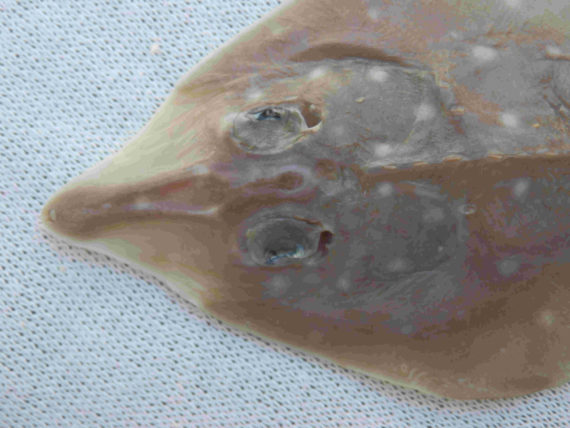 Speckled Guitarfish, Pseudobatos glaucostigna, Juvenile. Fish provided by the commercial fishermen of the greater Los Cabos area, Baja California Sur, December 2013. Length: 19 cm (7.5 inches).
Speckled Guitarfish, Pseudobatos glaucostigna, Juvenile. Fish provided by the commercial fishermen of the greater Los Cabos area, Baja California Sur, December 2013. Length: 19 cm (7.5 inches).
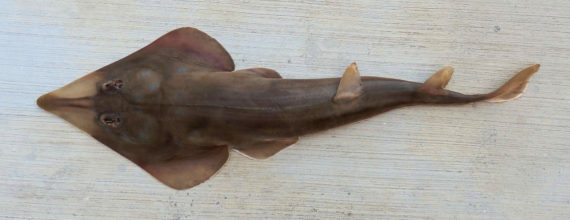
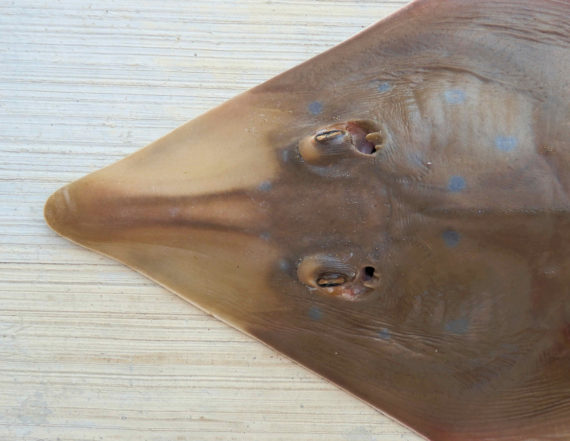

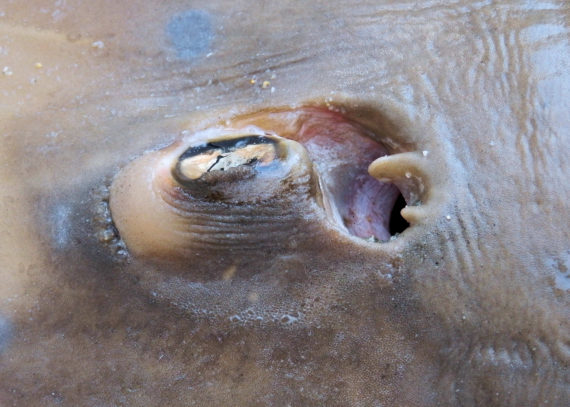 Speckled Guitarfish, Pseudobatos glaucostigna, Female. Fish provided by the commercial fishermen of the greater Los Cabos area, Baja California Sur, July 2013. Length: 88 cm (2 feet 11 inches).
Speckled Guitarfish, Pseudobatos glaucostigna, Female. Fish provided by the commercial fishermen of the greater Los Cabos area, Baja California Sur, July 2013. Length: 88 cm (2 feet 11 inches).

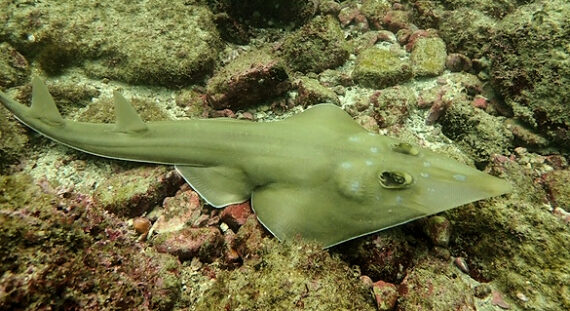 Speckled Guitarfish, Pseudobatos glaucostigna. Underwater photographs taken in Zihuantanejo Bay, Guerrero, March 2022. Photographs courtesy of Maude Jette, Dive Zihuantanejo, www.Divezihuatanejo.com.
Speckled Guitarfish, Pseudobatos glaucostigna. Underwater photographs taken in Zihuantanejo Bay, Guerrero, March 2022. Photographs courtesy of Maude Jette, Dive Zihuantanejo, www.Divezihuatanejo.com.
The Speckled Guitarfish, Pseudobatos glaucostigma, is a member of the Guitarfish or Rhinobatidae Family, and is known in Mexico as guitarra punteada. There are eight global members of the genus Pseudobatos, of which two are found in Mexican waters of the Atlantic and five in the Pacific Ocean.
The Speckled Guitarfish has a shark-like body and a large triangular head that tapers to a pointed blunt snout and incorporate the fused pectoral fins. Their discs are longer than they are wide. They are brown in color with symmetrically arranged slate gray spots around their eyes and on the extreme part of their upper back (pictured above). Their snout is translucent and their pectoral and pelvic fins have pale margins. Their ventral side is off-white with irregular black patches on the snout. Their snout is moderately long with a blunt point and their mouth is straight with long oblique nostrils. Their snout has 2 cartilaginous ridges that are parallel, fairly wide apart, and well separated throughout their length. They have a large spiracle behind each eye (pictured below), with 2 folds, the outer fold being larger that the inner fold. Their body is smooth to the touch, yet they have a series of small blunt spines along the middle of their back, a single group on each shoulder, and a few above each eye, and around their spiracles. Their caudal fin is asymmetrical and without a distinct lower lobe; and, they have 2 large triangular-shaped dorsal fins of equal size that originate behind their pectoral fins.
The Speckled Guitarfish is a demersal species that form large schools in shallow coastal waters over sandy and muddy bottoms in bays and estuaries at depths up to 111 m (365 feet). They reach a maximum of 89 cm (2 feet 11 in ) in length and 3.6 kg (8 lbs 0 oz) in weight. They consume a wide variety of crustaceans and small fish. They are masters at camouflage and have the ability to rapidly change colors to match their substrate. Reproduction is via yolk sac with offspring born alive in litter sizes of 4 to 28. The Speckled Guitarfish is poorly studied with very limited information available about their lifestyle and behavioral patterns including specific details on age, growth, longevity, movement patterns, diet, habitat use, and reproduction.
The Speckled Guitarfish is a resident of all Mexican waters of the Pacific Ocean with the exception that they are absent from Guerrero Negro, Baja California, northward along the central and northwest coasts of Baja, and in the northern 10% of the Sea of Cortez.
The Speckled Guitarfish is very similar in size and shape to several other Guitarfish but they are the only species with slate gray spots on their head and upper body making for easy identification.
From a conservation perspective the Speckled Guitarfish has not been formally evaluated. They are caught primarily as a by-catch of benthic fisheries. They have been utilized as food by Native Americans for centuries although currently their food value is considered of very marginal quality. The majority are returned to the sea but some are retained and made into fish meal. They are considered harmless to humans.